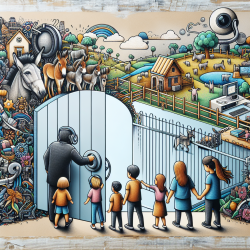Introduction
As climate change continues to reshape our world, its impact on health systems and outcomes cannot be overstated. The research article "Climate Change and Health under the Shared Socioeconomic Pathway Framework" provides a comprehensive analysis of how different socioeconomic development trajectories, known as Shared Socioeconomic Pathways (SSPs), influence health systems' resilience and effectiveness in a changing climate. This blog aims to help practitioners improve their skills by understanding these pathways and encourages further research to enhance health outcomes.
The Shared Socioeconomic Pathways (SSPs)
The SSP framework outlines five potential future scenarios, each with varying challenges to climate adaptation and mitigation:
- SSP1: A sustainable future with low challenges to adaptation and mitigation, emphasizing cooperation and improved living standards.
- SSP2: A middle-of-the-road scenario with moderate challenges, characterized by gradual improvements and persistent pockets of poverty.
- SSP3: A fragmented world with high challenges, marked by minimal cooperation and entrenched inequality.
- SSP4: A world of deepening inequality with high adaptation challenges but low mitigation challenges.
- SSP5: A future with low adaptation challenges but high mitigation challenges, focusing on economic growth at the expense of environmental health.
Implications for Health Systems
Each SSP presents unique challenges and opportunities for health systems:
- Leadership and Governance: Effective leadership is crucial for addressing climate-health linkages. Under SSP1/SSP5, coordinated actions and international cooperation are emphasized, whereas SSP3/SSP4 lack comprehensive planning and support.
- Health Workforce: Training healthcare workers on climate-related topics is essential. SSP1/SSP5 prioritize this, while SSP3/SSP4 show little effort in workforce development.
- Health Information Systems: Accurate data is vital for effective policymaking. SSP1/SSP5 invest in robust information systems, while SSP3/SSP4 face significant data gaps.
- Essential Medical Products and Technologies: Infrastructure resilience is key. SSP1/SSP5 focus on climate-resilient facilities, whereas SSP3/SSP4 struggle with fiscal constraints.
- Service Delivery: Innovative service delivery models are needed. SSP1/SSP5 ensure high-quality, climate-adapted services, while SSP3/SSP4 face challenges in maintaining service quality.
- Climate and Health Financing: Securing funding is crucial. SSP1/SSP5 prioritize climate-health funding, while SSP3/SSP4 experience financial limitations.
Conclusion
The research highlights the importance of adapting health systems to climate change challenges. Practitioners can leverage these insights to innovate and improve health outcomes, particularly in vulnerable communities. Further research is needed to explore best practices and quantify changes in mortality distribution under different SSPs.
To read the original research paper, please follow this link: Climate Change and Health under the Shared Socioeconomic Pathway Framework.










